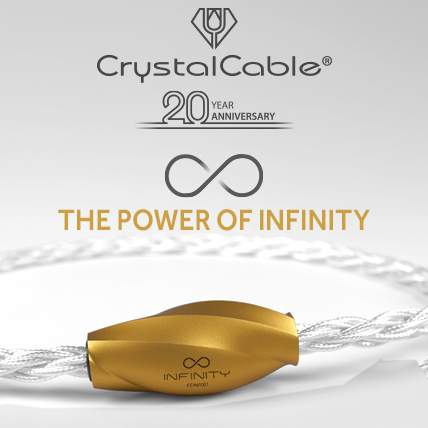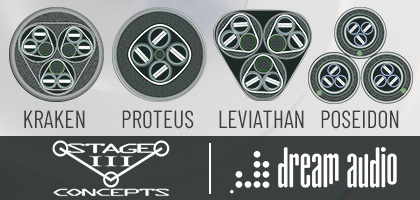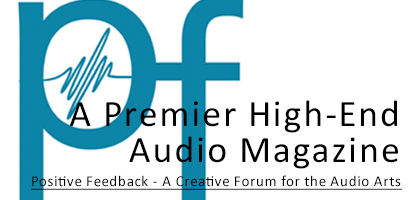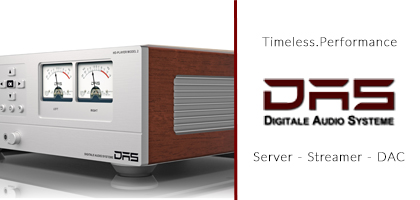 Contents
Contents
No. 257 October 2025
- COVER REVIEW: ANCIENT AUDIO Silver Grand Mono Mk II ⸜ power amplifier • monoblocks » POLAND • Kraków
- KRAKOW SONIC SOCIETY № 153: 30 years of ANCIENT AUDIO » POLAND • Kraków
- FEATURE ⸜ music & technology: HISAO NATSUME presents - In search for the lost great pianism Chopin tradition » part 2 (France) » JAPAN • Tokyo
- REVIEW: AUDIOPHONIQUE Classic AP 300D ⸜ power amplifier » POLAND • Pruszków
- REVIEW: AVATAR AUDIO Holophony No. 1 ⸜ loudspeakers • floor-standing » POLAND • Osowicze
- REVIEW: DIVALDI Gold PA One ⸜ integrated amplifier » POLAND • Kraków
- REVIEW: J.SIKORA Aspire ⸜ turntable (deck + tonearm) » POLAND • Lublin
- REVIEW: MB AUDIO CABLE Silver ⸜ analog interconnect ⸜ RCA » POLAND • Turza Śląska
- REVIEW: XACT N1 ⸜ LAN switch » POLAND • Wrocław

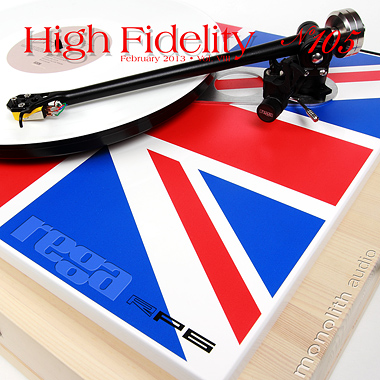
|
CONVERSATIONS XIII The famous aphorism, believed to have been said by Frank Zappa, “writing about music is like dancing about architecture”, is very accurate, it would seem. Like any good aphorism. The author’s seriousness made it enter pop culture forever, becoming a sort of antidote for what critics say – not only about music.
I don’t perceive such “epiphanies” as something final or unmoved, however. They are, in my opinion, picklocks intended to let some fresh air into a discussion. Their effectiveness allows for taking a deeper breath, but nothing besides that. 
The critique of sound, or the way music is played back by different devices, is one of the least recognized and described categories. There are, of course, magazines that specialize in doing precisely that (see: Audiophile in the reading room or audio magazines), and some, like the British “Hi-Fi Magazine”, are well over 50 years old. They are still regarded as hobby magazines rather than specialist magazines. Despite that, we try to cross the barrier between text and sound in them. Even right now in this very place.
A great majority of the contents of audio magazines are the descriptions of sound reproduction devices. They are supplemented by interviews, reportages and columns, all talking about the same thing – audio equipment. An equally important part of hi-fi magazines is information about music; some believe it is the most important part of all. Because, as they say, that’s what it’s all about – about the best and most accurate reproduction of MUSIC, in precisely that hierarchy. This is why every good audio magazine has a section dedicated to music. The way it is written differs from magazine to magazine and ranges from musicological analyses to clear sound, meaning the way it was recorded, mastered, re-mastered, and released. In “High Fidelity” we try to keep some kind of balance between these two polar opposites. In hindsight, I can see, however, that we’re closer to the second option. Nevertheless, no matter how we write, the most important thing is that we DO write. PETER GABRIEL So. 25th Anniversary Deluxe EditionRealworld 884108001400 PGBOX2 
Although the 25th anniversary of the release of So, the album of ex-Genesis vocalist, was in 2011, it’s “anniversary” edition wasn’t released until 2012. As it turns out, the artist didn’t make it on time, busy with his regular projects, including the albums Scratch My Back from 2010 and New Blood, released a year later. GRADE BILL EVANS Bill Evans Live At Art D'Lugoff's Top Of The GateResonance Records, HLP-9012 "Limited Edition - Promo 104" 
It all began with me buying a 10” vinyl record with the same title. This limited edition (1,500 copies), released on a blue vinyl, turned out to be a selection heralding the whole record, chosen “Record of the month” by “Stereophile” in July 2012 (see HERE).
The history of these recordings is incredible. It was released by a tiny company Resonance Records, managed by George Klabin, the sound producer. And it was him, aged 22, who registered this material on the 23rd of October 1968 on a stereo tape recorder without any prior soundcheck or preparations. GRADE DIARY OF DREAMS The Anatomy of SilenceAccession Records, A 132 
The Anatomy of Silence that premiered on October 19th, 2012, is this German band’s 11th album. Labelled “dark wave”, closely related to gothic music, the band decided to release a very different album. Adrian Hates, the DoD frontman, founder and the owner of Accession Records, decided to re-record some of his most important tracks, this time in “unplugged” versions. The Anatomy of Silence therefore contains nothing but drums, grand piano, acoustic guitars, cello and double bass. And it works. Although I’m a fan of their One Of 18 Angels period of time, I remained faithful to the band until this very day. The new record doesn’t change much, although it allows one to notice the potential lying in these tracks. It’s a nice bonus, especially since it’s really well recorded – and it’s something that Hates usually has trouble with. Previously reviewed: GRADE HEY Do Rycerzy, do Szlachty, doo MieszczanSupersam Music, SM 02 
The first record released by Supersam Music was Nosowska’s solo album 8 from 2011. The beautiful, wonderfully recorded CD really showed what place the artist was at. The whole band’s recording of Do Rycerzy, do Szlachty, doo Mieszczan seems to be its continuation, although official information is that it was recorded over a two-year period. |
The sound is focused and multi-layered. It has depth seldom found in such dense music. The dynamics is rather compressed, which doesn’t prevent every instrument from sounding powerful and kicking. The vocals are warm and saturated. You won’t find ultimate resolution known from David Sylvian’s records, for example – however, this makes no difference when you’re listening. The keywords are: density and fullness. It’s with material like this that well set up, sophisticated audio systems will show what they were made for – we will constantly re-discover new details that there is lots of, for commercial material like this. It was clearly very carefully recorded. GRADE PIETER NOOTEN Surround UsRocket Girl, rgirl85 
Although he is best known as the composer and keyboardist on the first three Clan of Xymox albums, Pieter Nooten is much more than that. His 1987 album Sleeps With The Fishes, recorded with Michael Brook, put him on one level with the mother-band. It seems this Danish man, currently residing in London, wasn’t able to lift that burden, as he fell silent for twenty years. Only in 2007 did his second solo album, Ourspace, get released, followed by Here Is Why in 2011 after signing a contract with the Rocket Girl record company. GRADE
"HIGH FIDELITY", CZY NIE "HIGH FIDELITY"? 
It is said that copying is the highest form of appreciation… That’s how I understand what the Greek, few-year-old, printed magazine “High Fidelity” did. Their newest, 47th edition has a cover almost identical to the cover of the magazine you are reading right now, released as its 96th edition in June 2012. Please take a close look at both of them and find 10 differences… KING CRIMSON Larks' Tongues in Aspic40th Anniversary Series WHD Entertainment, Inc., IECP-20220/221 
This could’ve been expected – Steven Wilson, in his other life the frontman of Porcupine Tree, remixed the album Larks’ Tongues in Aspic by King Crimson, originally released on the 31st of March, 1973. It’s incredible how much Robert Fripp trusted him. Re-mastering is one thing, and remixing – or creating a new version of an album – is another. Wilson received a carte blanche, however, and prepared new versions of all the Crimson’s records. GRADE KRAUTROCK Ash Ra Tempel/Ashra, Popol Vuh, Tangerine Dream
If we’re talking Japanese editions, I would like to bring to your attention Krautrock’s best release yet. In 2011 and 2012, the Japanese company Belle Antique released whole discographies of such bands as Ash Ra Tempel/Ashra, Popol Vuh, Tangerine Dream and others. The records were released with beautiful cover art as SHM-CD discs. Kaiko Sakurai (Ravensbourne) and Suguru Firata@Marquee Inc. led the team reproducing the original cover art. The digital re-master was prepared by Kazuo Ogino. GRADE MARYSIA PESZEK Jezus Maria PeszekMystic Production, MYSTCD 214 
When Marysia Peszek’s third record was released on the 3rd of October, 2012, I wanted to write a long article about it right after listening to it a few times. It was a combination of elements that are seldom seen together – smart lyrics, beautiful music, great arrangements and great production. The article has never been written for obvious reasons (not enough time), however I’ve been listening to the record for the past three months and it just makes me marvel further at the artist. She’s stirred up quite a storm, as even politicians have been commenting on the record. Is there anything else we could demand from art? GRADE BAJM (book) Ewa Tutka, ''Płynie w nas gorąca krew''Warszawa 2012 
On the 28th of November, 2012, the first official biography of the Polish band BAJM (an acronym) was published, written by Ewa Tutka and titled Płynie w nas gorąca krew (“Hot blood runs in us”, Warsaw 2012). The book is sold during BAJM gigs and it’s a chance to get it signed – I’ve got my copy signed by Beata Kozidrak and Ewa Tutka. Wojciech Pacuła |
About Us |
We cooperate |
Patrons |
|
Our reviewers regularly contribute to “Enjoy the Music.com”, “Positive-Feedback.com”, “HiFiStatement.net” and “Hi-Fi Choice & Home Cinema. Edycja Polska” . "High Fidelity" is a monthly magazine dedicated to high quality sound. It has been published since May 1st, 2004. Up until October 2008, the magazine was called "High Fidelity OnLine", but since November 2008 it has been registered under the new title. "High Fidelity" is an online magazine, i.e. it is only published on the web. For the last few years it has been published both in Polish and in English. Thanks to our English section, the magazine has now a worldwide reach - statistics show that we have readers from almost every country in the world. Once a year, we prepare a printed edition of one of reviews published online. This unique, limited collector's edition is given to the visitors of the Audio Show in Warsaw, Poland, held in November of each year. For years, "High Fidelity" has been cooperating with other audio magazines, including “Enjoy the Music.com” and “Positive-Feedback.com” in the U.S. and “HiFiStatement.net” in Germany. Our reviews have also been published by “6moons.com”. You can contact any of our contributors by clicking his email address on our CONTACT page. |
 



|
   |
main page | archive | contact | kts
© 2009 HighFidelity, design by PikselStudio,
projektowanie stron www: Indecity
